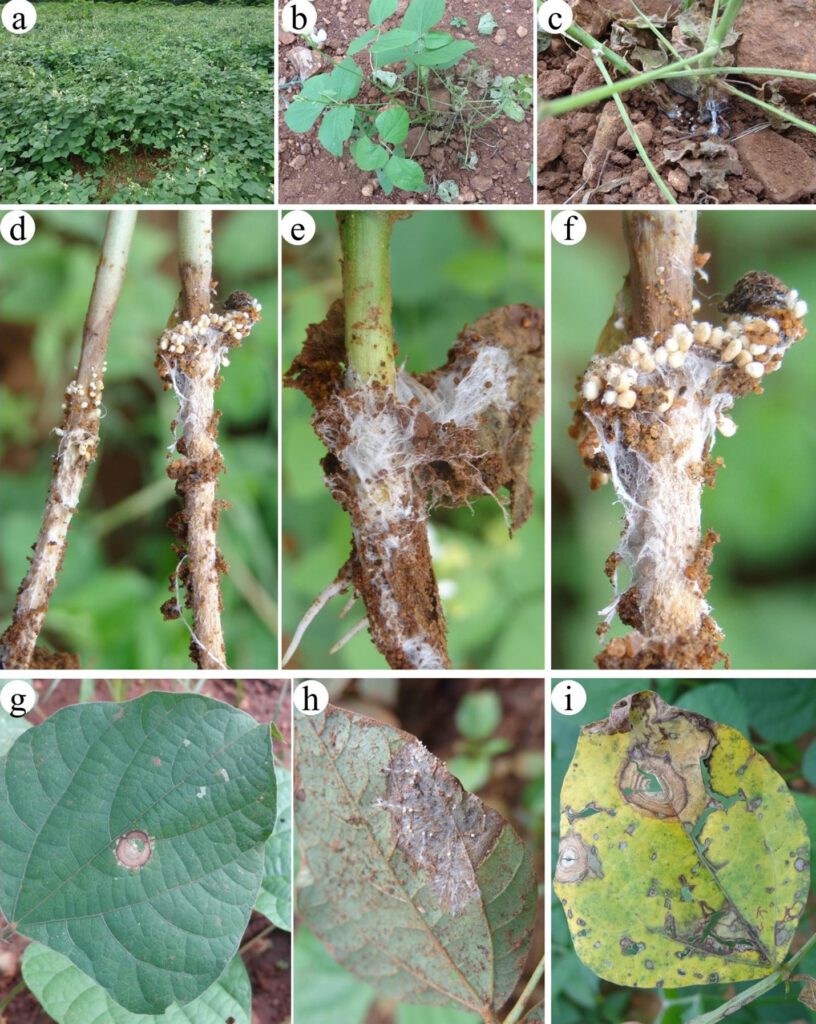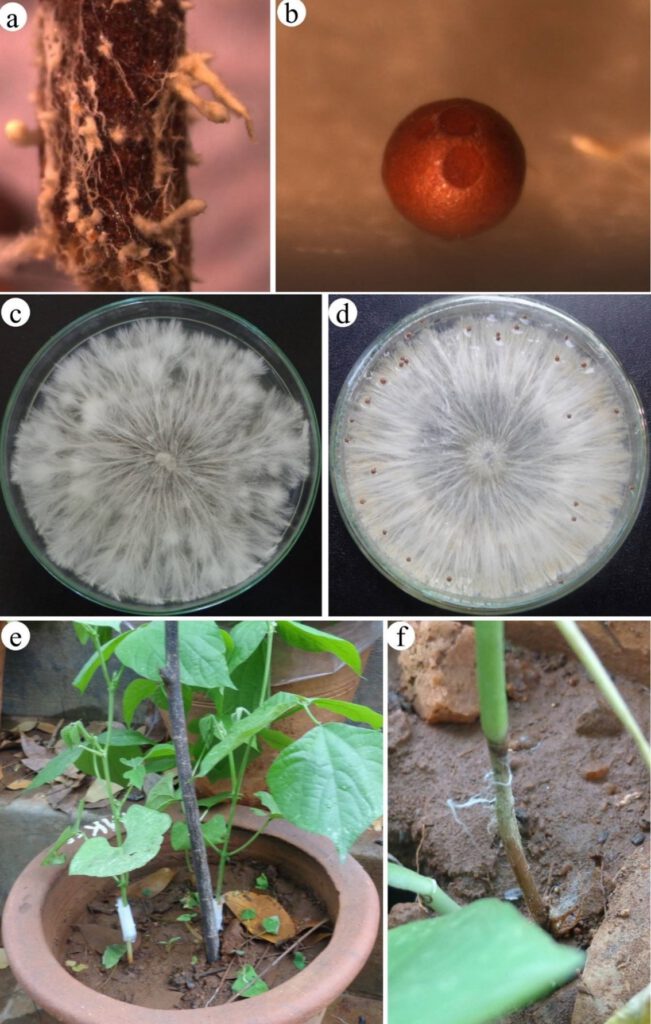Athelia rolfsii (Curzi) C.C. Tu & Kimbr., Botanical Gazette Crawfordsville 139: 460 (1978)
MycoBank number: MB 309351; Index Fungorum number: IF 309351; Faceoffungi number FoF 11680; Fig. *** Sajee & Mahadevakumar
Pathogenic on roots and stem of Lablab purpureus. Sexual morph: not determined. Asexual morph: numerous globoid sclerotial bodies were developed on the collar region of infected Lablab purpureus plants at the stem soil interface. Sclerotia measured 1-3 mm in diam. (n=50), initially whitish and later turned to brownish upon maturity.
Cultural characteristics: On PDA, reaching 90 mm at 28 °C after 7 d in 12/12 h light/dark, dense white fluffy colonies developed rapidly over the culture plates and produced characteristic sclerotia near the edges of plates and on the upper lid surface. After, 12-15 days of incubation sclerotia were recorded per plate ranging to 180 – 490 (mean 358 ± 24, n = 20). Colonies on PDA reaching 90 mm at 28°C after 14 d in 12/12 dark, colonies appeared white to pink with abundant aerial mycelium.
Material examined: India, Karnataka, Mysore, Doddamaragowdanahally, on infected plants of Lablab purpureus (L.) Sweet (Fabaceae), 17 April 2013, S. Mahadevakumar (UOM-Sr-13-4), living culture (Sr-LP3)
Habitat: Wide range of hosts (Farr and Rossman 2022), Lablab purpureus (This study)
Distribution: Brazil, China, Cuba, Fiji, New Zealand, Panama, Papua New Guinea, Phillippines, South Africa, Spain, Sri Lanka, West Indies and USA (Farr and Rossman 2022), India (This study)
GenBank number: KJ002765 (ITS)
Notes: The characteristic foot-rot and leaf blight disease of Lablab purpureus are reported in the present study and the diagnostic features are presented. The disease was observed at all stages of plant growth. In the early infection stage, the collar rot affected seedlings collapsed. Initial symptoms appeared as tan water-soaked lesions usually near the stem-soil interface, with lesions that enlarged and expanded towards the shoot apex, causing rotting. Similarly, lesions expanded towards the roots causing root decay and death of the host plant. The pathogen produced numerous globoid sclerotial bodies over the surface of the host plants. The cabbage heads’ rotting was recorded with sclerotia development over the head surface. The disease was most prevalent during the rainy season. In dry weather, infected tissues showed the presence of mycelial threads with very few hard, melanized sclerotial bodies. In USDA host fungal database, the record 51387 specifies a geographical record for India, which shows the sequences submitted by our group to GenBank in 2013 and referred by Paul et al. (2017), a new geographical record for Athelia rolfsii on Ipomoea batatas from Korea. Based on the morphological, and cultural characteristics and ITS-rDNA analysis, the fungal pathogen was identified as Athelia rolfsii. This is the first report on the association of A. rolfsii causing root rot and leaf blight disease in L. purpureus from India and worldwide.

Fig. ** a-c Field symptoms of sclerotial wilt under field conditions. d-f Collar region showing fungal pathogen colonizing the stem soil interface. g–i Sclerotia infecting leaves.

Fig. ** a Stem part showing the mycelial cords colonized on the surface. b Sclerotia observed under stereo zoom microscope. c-d Pure cultures of Athelia rolfsii on PDA medium. e-f Pathogenicity test performed under greenhouse showing the color rot symptoms
